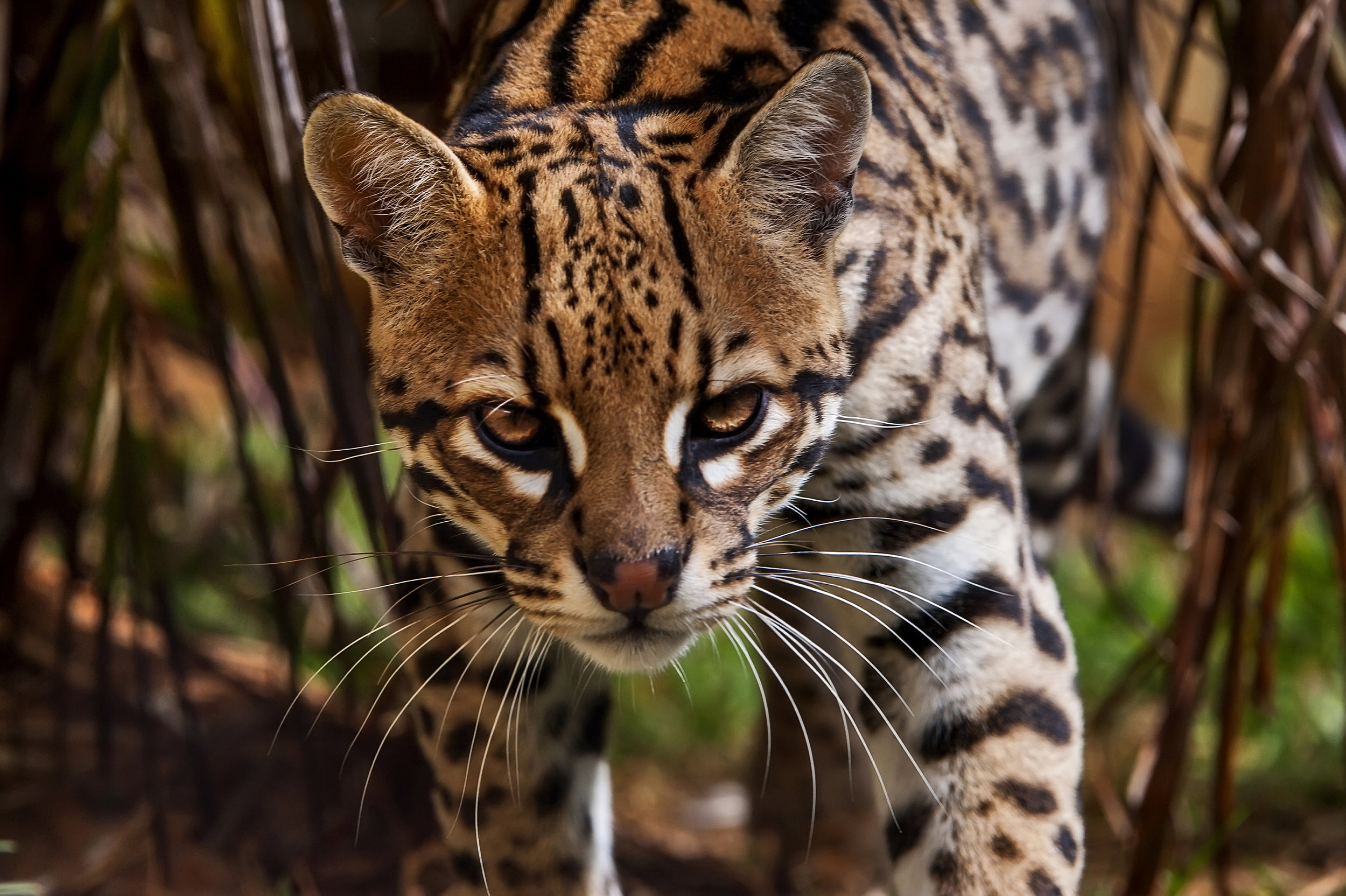Ocelot
"Young Ocelot" by J.A.W. Cooper (Color Pencil, Graphite & Digital)
“I chose to draw the ocelot because of its striking markings and lithe silhouette.”
Habitat
In the United States, ocelots are found in isolated populations in southern Texas and Arizona, though they are found in every country of Central and South America, with the exception of Chile. They have adapted to a variety of different environments. Thorn scrubs, coastal marshes, mangrove forests, savanna grasslands and both tropical and subtropical forests are home to these beautiful and small wild cats.
Family life
The ocelot is solitary and nocturnal. It prefers sleeping in trees and bushes. Males have larger territories than females. Female ocelots have litters of two or three darkly colored kittens once every two years. Kittens are independent after about one year, but do not always leave their mother at this time. Ocelots use both vocalizations and chemical signals to communicate with each other and establish their territories. Some studies have shown that sexual maturation in males coincides with acquisition of territory.
Lifespan
Ocelots live on average in the wild between seven and ten years. An individual lived beyond 20 years in captivity.
Hunting Habits/Diet
Ocelots are carnivores. They are opportunistic, killing a variety of smaller animals including rabbits, rodents, iguanas, deer, birds, snakes and frogs. In the trees, they will also stalk and kill monkeys and birds. Their back teeth are sharp and act similarly to scissors, while fangs in the front of their mouth generally perform the bite that kills their prey.
Population
While there are an estimated 800,000 to 1.5 million ocelots found worldwide, several populations are facing significant threats to their survival.
Fun Fact
The ocelot is also known as the dwarf leopard or the painted leopard. They have unique patterns characterized by dark spots on an orange, tan and white coat. They can swim well; unlike many other cats, they do not avoid water.
Why are They Endangered?
The ocelot’s unique fur has made them a high value target for hunters. As they are so widespread, populations have unique threats depending on their location. Habitat loss and fragmentation is the largest issue facing the survival of the ocelot in some of these isolated pockets. They are also subject to retaliatory killing due to attacks on poultry and are often caught and sold into the illegal pet trade.
Status
Least Concern


